Influence of Layering and Boulder Inclusions in a Granular Target on Crater Formation: Insight from Laboratory and Numerical Studies.
- 1Centro de Astrobiologia (INTA-CSIC), Dept Planetology and Habitability, Torrejon de Ardoz, Spain
- 2Space Research and Planetary Sciences, University of Bern, Switzerland
- 3Museum für Naturkunde Berlin, Leibniz Institute for Evolution and Biodiversity Science, Germany
- 4Department of Earth Science Engineering, Imperial College London, UK
- 5Freie Universität Berlin, Germany
Introduction: NASA’s Double Asteroid Redirection Test (DART) will impact the smaller component of the 65803 Didymos asteroid system, Dimorphos, and alter its orbital period around the primary, thus demonstrating the controlled deflection capabilities of near-Earth asteroids by a kinetic impactor [1, 2]. ESA’s Hera mission [2] will arrive at Dimorphos several years after the DART impact and provide a detailed characterization of the impact outcome, including the morphometry and morphology of the crater. Recent impact experiments and numerical studies [3–5] have shown that the kinetic impact efficiency depends strongly on the target properties and structure, and is non-unique (i.e., a number of target property configurations, such as different cohesion-porosity combinations, can result in the same deflection and a measure of the deflection alone can be interpreted in different ways depending on the target and impact properties). Therefore, for a successful interpretation of the DART impact outcome it is important to understand the influence of asteroid properties on the cratering process. Moreover, the DART impact outcome analysis will be based on numerical models, which require extensive and accurate prior validation.
Most previous impact experiments and the subsequent validation work of numerical models have focused on homogeneous targets [e.g., 6, 7]. However, it is unlikely that Dimorphos is homogeneous at the scale of DART impact. Here we present preliminary results from impact experiments and numerical simulations specifically designed to mimic asteroid surface materials and structures (e.g., layered targets, rubble piles). The experiments are performed at the Experimental Projectile Impact Chamber (EPIC) at Centro de Astrobiología CSIC-INTA, Spain.
Methods: The EPIC utilizes a 20 mm calibre compressed N2 (300 bar) cannon that launches projectiles at velocities up to ≈420 m/s and at angles of 20– 90◦ from horizontal [8]. The experiments, half- or quarter-space, are recorded with high-speed cameras and the resulting crater profiles are scanned in 3D with 0.5 mm resolution. Here we use the iSALE-2D [9] and the Bern SPH [10] shock physics codes to simulate the laboratory experiments. Both iSALE-2D and SPH include material models suitable for geological materials, various equations of state and porosity compaction models. We compare numerical models with impact experiments into targets with three different structures: homogeneous, layered and heterogeneous.
Results and discussion:
- Vertical impacts into homogeneous targets. These impact experiments were performed into dry beach sand ("slow pour" maximum compaction) and iron grit targets and the results are used to validate the ejecta curtain formation and crater size from 2D numerical models into homogeneous targets. This setup is also used as reference for comparison with more complex target settings.
- Layered targets. Recently visited asteroids (e.g. Itokawa, Ryugu) have been observed to have a layered structure (i.e., a layer of regolith overlying a much stronger and denser substrate). The effects of target layering on impact cratering in the strength regime have been studied extensively through laboratory experiments [e.g., 11] and simulations [e.g., 12]. However, it is possible that Dimorphos has a granular cohesionless upper layer and that cratering in this layer is gravity-controlled, much like Hayabusa2’s SCI experiment [13]. Little is known of the effects of layering in the gravity regime, however it is likely that the momentum transferred from the DART spacecraft can be both amplified or reduced, depending on Dimorphos’ layering configuration [12]. We carry out experiments with layers of different density (i.e., beach sand over iron grit) to simulate gravity-controlled cratering in layered targets. While much of the kinetic energy of the projectile is released in the weaker upper target, this material also requires relatively less energy to be cratered resulting in a concentric crater morphology. This crater morphology is well reproduced in our iSALE-2D numerical models.
- Complex target structures/"rubble piles". Variations in strength and density also occur in very heterogeneous objects such as rubble-pile asteroids. An irregular crater growth and, consequently, irregular ejection of material affect the asteroid deflection (e.g., unpredictable motions). Such irregularities are difficult to model numerically and require full 3D geometry, which is computationally expensive. Nevertheless, efforts to model rubble pile geometries in the context of DART are undertaken [14] and laboratory experiments are essential to validate such models. We have performed shots into targets with porous ceramic balls (simulating “boulders”) of approximately equal size and weight as the projectile embedded in a matrix of beach sand (“slow pour” maximum compaction) (Fig. 1). Experiment 1 had balls distributed uniformly and at regular intervals within the sand. Experiment 2 had the same configuration, but only in half of the target while the other half was beach sand only. Comparisons were then made with the reference shot in pure beach sand. There is now a very good fit between the reference crater (Exp3) and the part of the Experiment 2 crater developed in the pure sand target, and there is an equally good fit between the half of the crater developed in the “rubble-pile” part of the target and the crater from Experiment 1 (Fig. 2). The “boulders” in the target seem to affect the excavation flow lines, resulting in steeper ejection near the limit of the excavation cavity. This results in a more flat-floored and steep-walled crater (Fig. 2). Numerical simulation of Experiment 1 replicated the experimental result very well (Fig. 3). Balls placed in immediate proximity to the impact point were ejected and ‘rays’ were created in the ejecta blanket. Balls placed at about 3 ball diameters away from the impact point were displaced towards the crater rim, as also noted in the numerical simulation (Fig. 4).
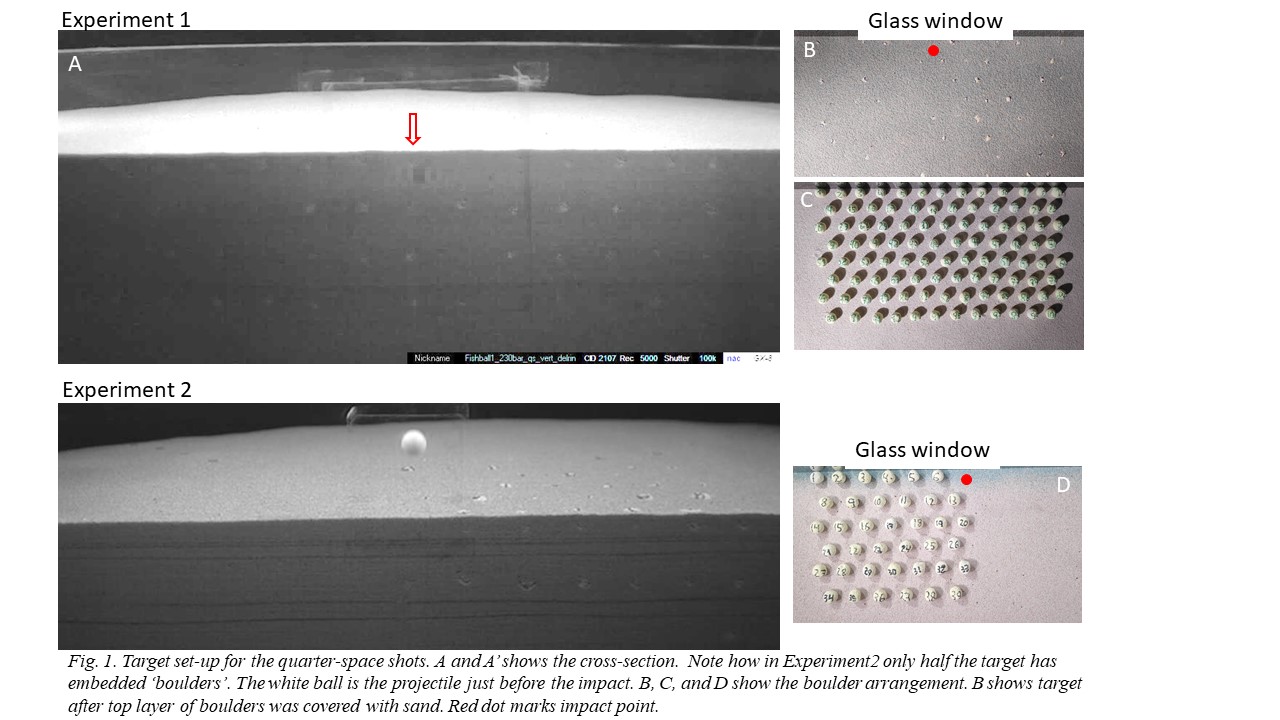
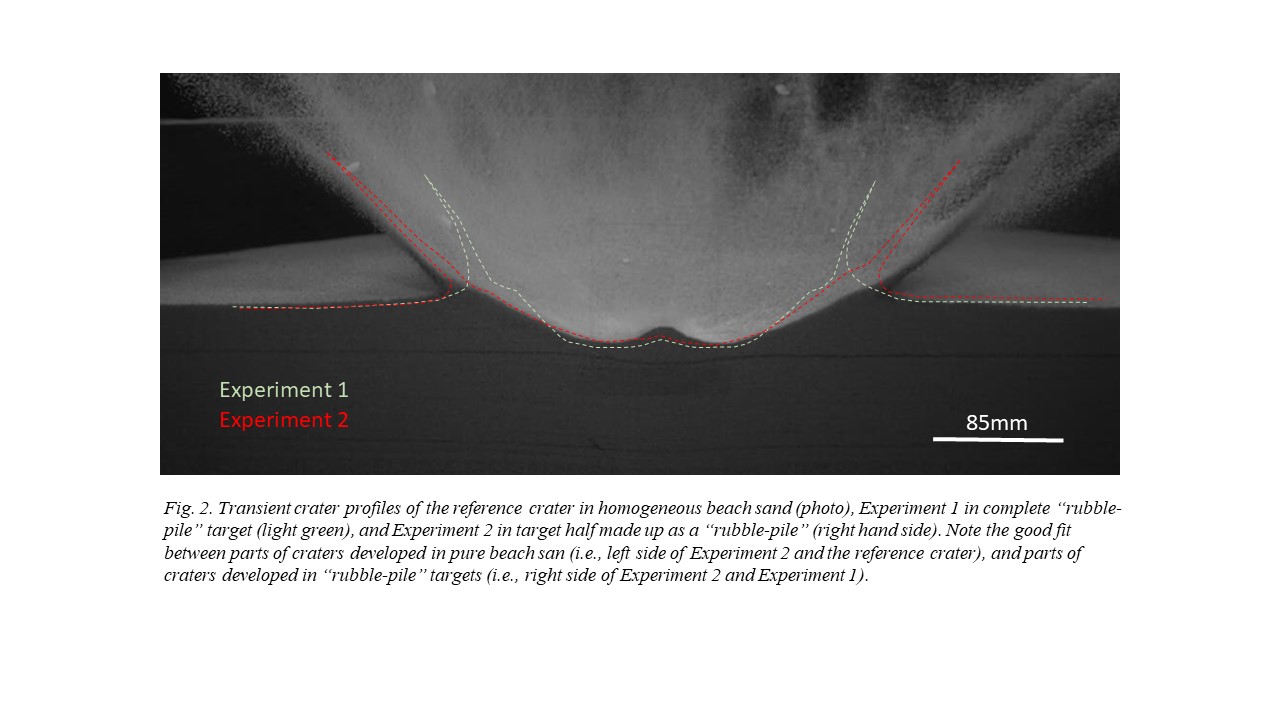
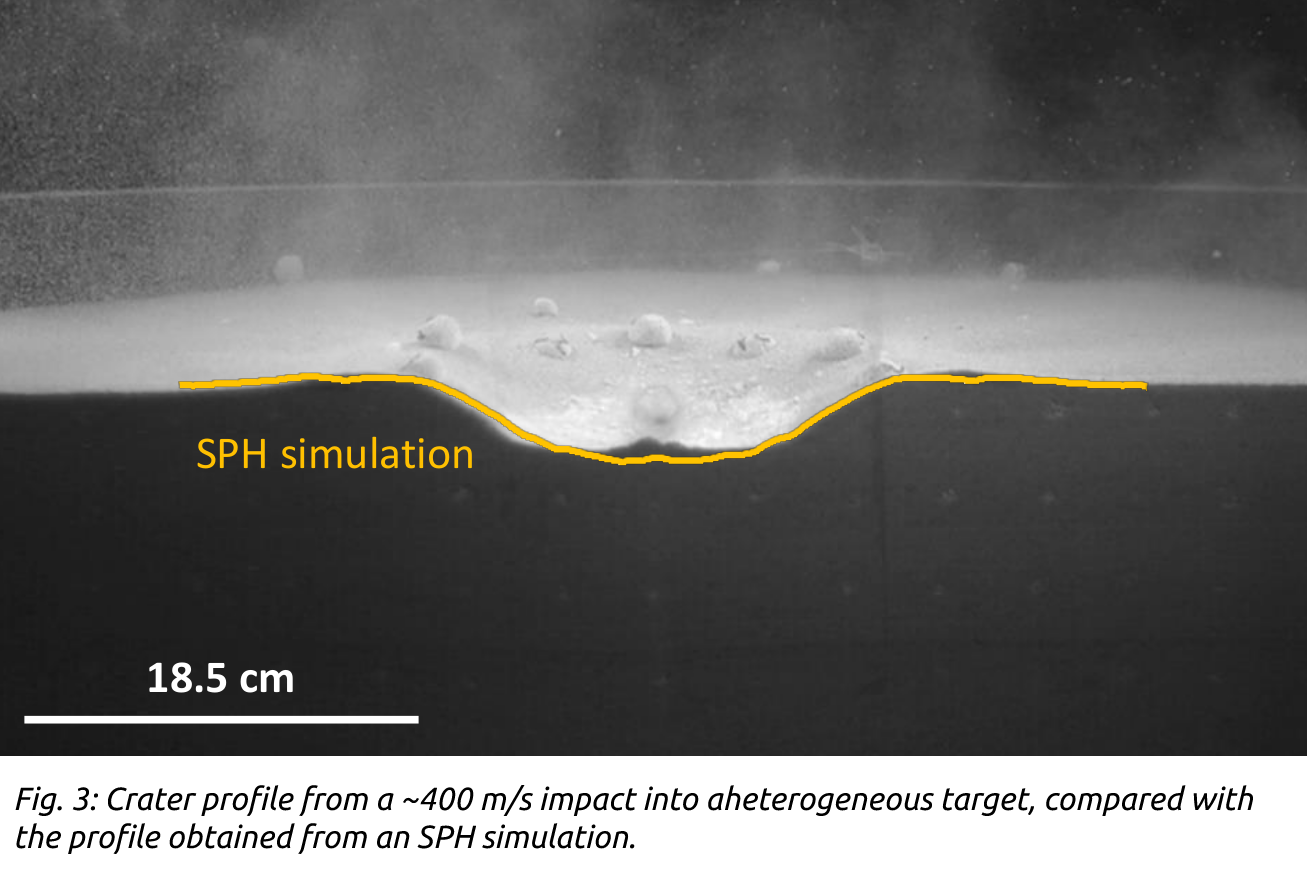
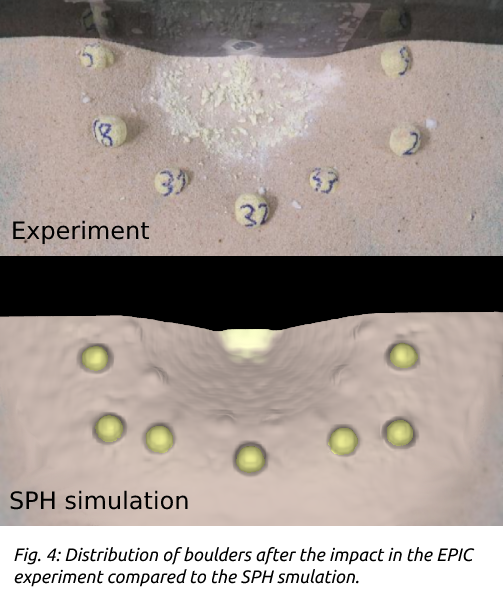
Conclusions: The impact experiments represent a first step in our work towards understanding the importance of target heterogeneities in the cratering process and impact momentum transfer. SPH simulations to reproduce these impact experiments are underway and preliminary results from the early cratering process show good agreement with the experiment.
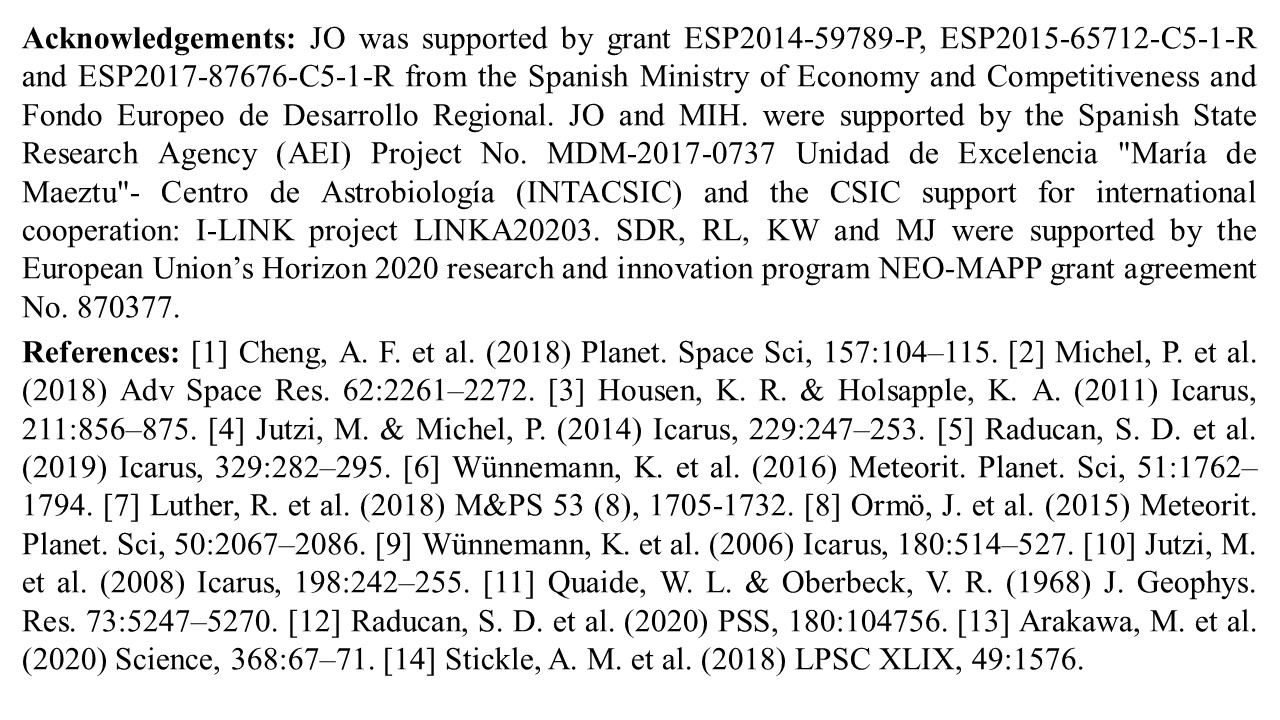
How to cite: Ormö, J., Raducan, S. D., Luther, R., Herreros, M. I., Collins, G. S., Wünnemann, K., Jutzi, M., and Mora-Rueda, M.: Influence of Layering and Boulder Inclusions in a Granular Target on Crater Formation: Insight from Laboratory and Numerical Studies. , European Planetary Science Congress 2021, online, 13–24 Sep 2021, EPSC2021-587, https://doi.org/10.5194/epsc2021-587, 2021.

